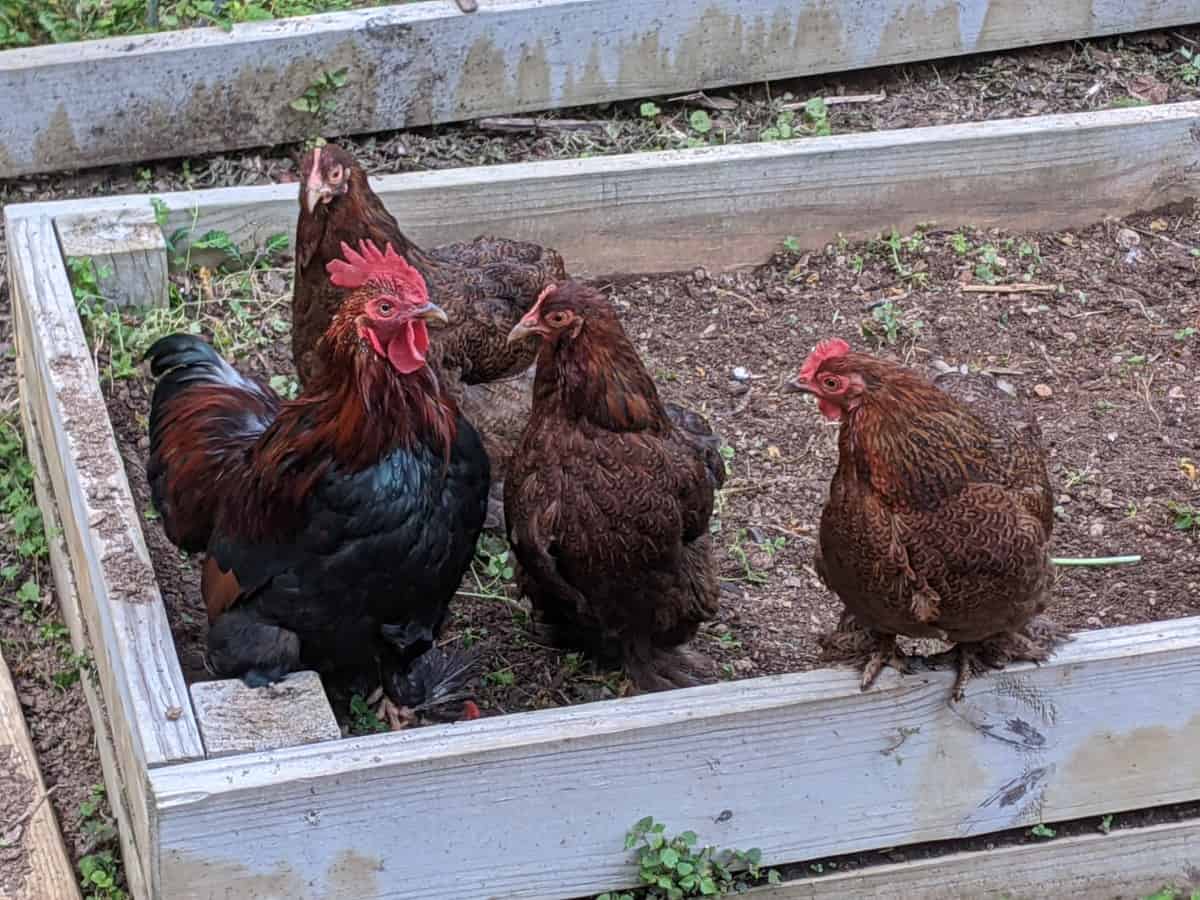It’s something of a fanciful dream for many suburban dwellers to walk into their backyard and collect their dally eggs from under softly clucking hens. Having kept backyard chickens myself, I know how far the dream is from reality.
There are many things to consider when choosing to keep chickens for eggs or meat, but most chicken owners who take the plunge find the experience incredibly rewarding.
One of the things to look at before deciding to buy yourself a clutch of chicks or a flock of laying hens is the costs involved in backyard chicken keeping. You will also need to decide whether you are keeping chickens to feed your family or if you plan to supplement your income with eggs or meat chickens.
When keeping backyard chickens, you must evaluate several costs. There are initial costs of buying laying chickens and setting up the coop, fencing, feeders, and drinkers. Monthly costs include food, bedding, and supplements. You will have to consider veterinary fees should a chicken be injured.
While it may be that backyard eggs are unlikely to be cheaper than buying them from the store, several things make people choose to keep hens. The first and most important factor is knowing exactly how the animals are treated and fed in your flock.
You will not have to worry that your eggs come from animals cruelly confined to small cages, denied sunlight and space.
The second factor is that you will be guaranteed fresh-laid eggs packed with goodness based on a healthy diet. If you raise chickens for meat, you will know that they have been humanely slaughtered. Chickens will provide you with fertilizer and are excellent pest control.
The cost of keeping chickens will depend on the number of chickens you plan to keep and for what purpose. You will need ample space for them and their coop, and be prepared to deal with the inevitable work they create.
Chickens will not only need to be fed and watered, but their coop and bedding maintained, and the chicken manure collected and disposed of.
I’ve broken down the things you need to consider and what costs you can expect in your first year of keeping backyard chickens.
How Much Does It Cost To Keep Chickens?
The cost of backyard chickens will likely be most expensive in the first year. You will need to provide your new birds with a run and coop, as well as suitable feeders and waterers.
You can keep costs down by searching local ads for second-hand supplies, or if you are handy with tools, building your own.
Initial setup costs will usually be one-time expenses and the cost of the chickens themselves. You will need to look at the ongoing monthly expenses associated with poultry keeping.

One-Time Expenses For Raising Chickens
Your most significant one-time expense will be a coop for your chickens and fencing for a run. A coop is necessary to keep your chickens enclosed and safe and provide shelter and nest boxes to lay their eggs.
Coops can run to many hundreds of dollars, depending on the size and how fancy it is. A simple chicken coop with a run for two hens will cost approximately $264 from Home Depot. Where as a metal coop from Omlet can cost over $1000.
One way to cut down on the cost is to build a coop yourself from materials you already own or can collect free or at a low price. Several websites have free designs that you can use. If you have a weekend to spare and some woodworking knowledge, this is an excellent option. For most coops, you will need a raised nesting area and an enclosed run.
Another option is to create a movable chicken ark. A chicken ark is a bottomless structure that contains your chickens and allows them to scratch. Once they have cleared an area and fertilized it with their droppings, you can move the ark to a new area.
All chickens will need feeders and waterers, and these could cost you around $30 each.
If you decide to buy chicks rather than pullets at the point of lay, you will need a brooder ($60) and a heat lamp ($55), and some small food and water dishes for them.

What Are The Most Economical Chicken Breeds To Raise?
Chicks are usually cheaper at $1-$5, but they need special care and equipment to survive their first few weeks. This is an added expense factor. A hen at point of lay (around 15-22 weeks old) is known as a pullet. Depending on the breed, a pullet will cost about $10 to $20 each.
Most backyard poultry keepers want hens for eggs. One of the best breeds for fresh eggs is the Golden Comet, a hardy hybrid breed that can lay up to 280 eggs in a year. I currently have bantam cochins which is a smaller breed that lays smaller eggs.
If you are looking for a bird for egg and meat purposes, the popular Rhode Island Red is your best bet. The Sussex is also a great choice. Both produce around 250 eggs a year and are great-tasting birds.
People who are new to keeping chickens may prefer to go with the Leghorn. This hardy white chicken is a perfect layer – about 250 eggs a year. A good beginner bird is the attractive brindled Plymouth Rock. Although they produce only 200 eggs a year, they make great family birds as they are very friendly.
The production of meat chickens is usually beyond the scope of the small backyard hen-keeper, but if this is what interests you, look towards breeds like the fast-growing Cornish Cross, the Orpington—which is also a good layer–, or the free-range suitable Freedom rangers.

Ongoing Expenses For Chickens
Once you have your chickens and their essential basics, you will need to look at the cost of their ongoing care.
Depending on the number of chickens you keep and whether or not they will have access to free-range food, the cost of their food will vary. On average, most chickens will need a minimum of 1 half cup of chicken feed a day.
Chicken feed can range from organic pellets, and medicated chick starter feeds to the most basic scratch grain. 50-pound bags of feed will range in cost from around $15 to $25. If each chicken eats approximately a ¼ pound a day, one $20 bag will feed four chickens for a little under two months. You will need around 7 bags of feed a year – $146 for the feed alone.
I supplemented my chicken food with fresh clover and leftovers from dinner. They were especially fond of yogurt!
Layers will also need oyster shells to help with shell production. Hens need the calcium provided by the oyster shells. A 5-pound bag of crushed oyster shells costs around $8-$10, but a bag will last a long time.
For healthy digestion, since chickens need gravel to grind their food, you may need to supply poultry grit. A 5-pound bag will cost you approximately $16. This crushed granite will last a reasonably long while.
Bedding is another expense you will need to take into account. My chickens had bedding of raked leaves, but you can buy straw by the bale. On average, you will be looking at around $10 a month for premium chicken bedding.
Conclusion
Keeping backyard chickens is a costly business, but some savings can be made by sourcing free or second-hand essentials, and the ongoing costs will depend on how much access to free-range pasture your chickens have.
Some people can pick up bedding supplies from local farms for an excellent rate, and it is worth it to look around for good deals. However, never skimp on the food and bedding and general care of your chickens! Neglect will lead to illness and miserable hens.

